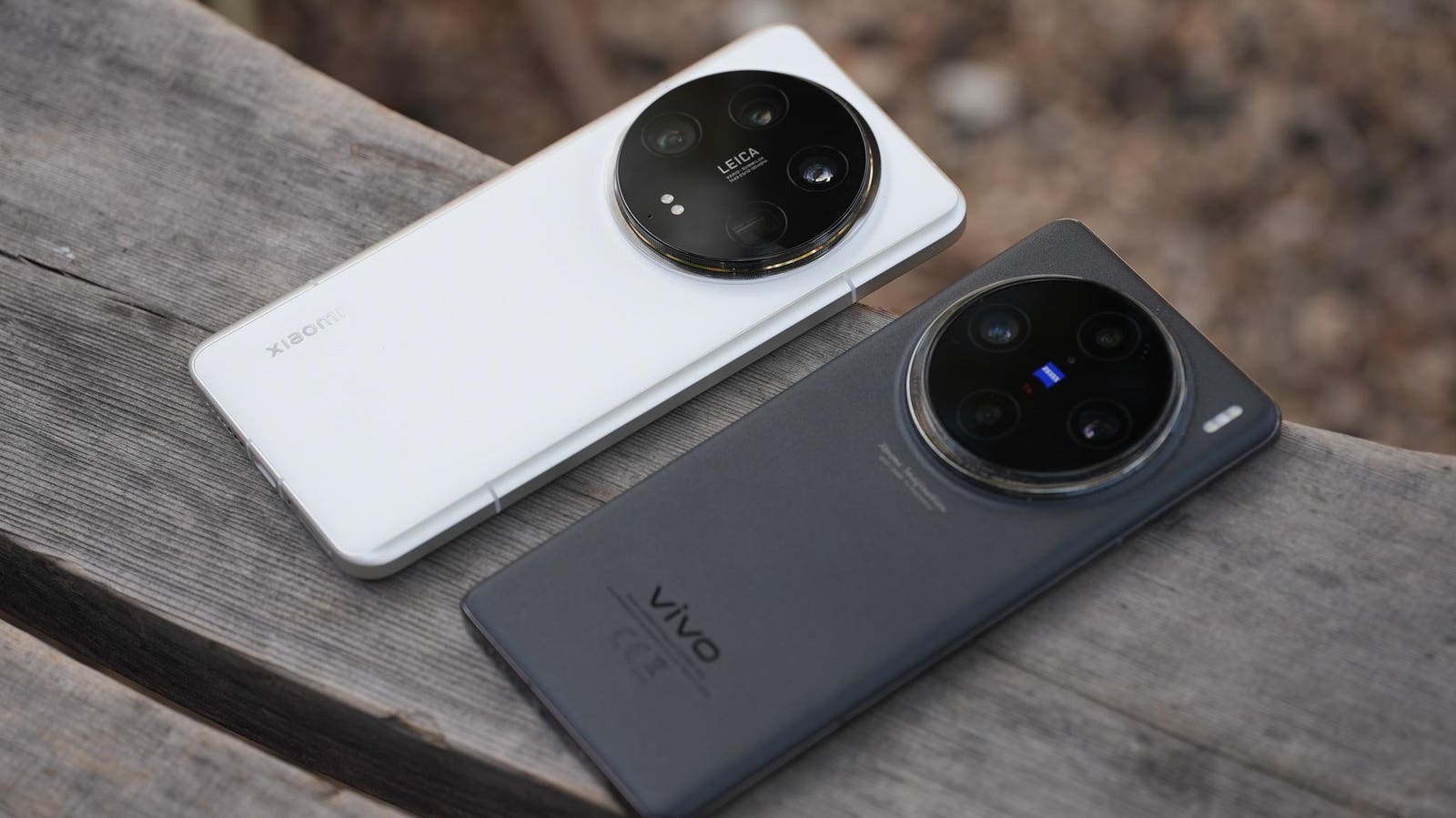I’ve been lucky enough to test nearly every flagship phone on sale. I’m not just talking about the major brands like the iPhone and Google Pixel that dominate the North American market; I can also test rare phones that are only sold in China or Japan. So, at the end of the year, I thought it was worth ranking my favorite devices. One keyword to note is that these are my “favorite” phones, not necessarily the “best” phones, although this list is generally about “best phones” since I’m someone who wants the best camera and hardware power users.
I’ve been doing this list since 2016 – although I did skip 2020 and 2021 due to work commitments – and generally I’d say the gap between the rankings is “very close.” Not this year – first place, a tie between two similar devices, far ahead of the rest in terms of my personal favorite. I’d say there’s also a big gap between the No. 2 phone and the No. 2 phone. Without further ado, here are my favorite phones in 2024:
7: Samsung Galaxy S24 Ultra
Galaxy S24 Ultra
Xin Ben
I’ve been critical of Samsung phones over the past few years because I think the company has been on cruise control ever since the US imposed sanctions that kicked Huawei out of the global phone market (before the sanctions, Huawei was expected to overtake Samsung in 2019) as The world’s largest mobile phone brand by market share).
While the Galaxy S24 Ultra doesn’t bring much new to the table in terms of hardware (it looks almost identical to the last three S Ultra phones), it’s still an extremely refined and well-rounded device that’s well suited to being a capable equipment. I say this because, between Samsung’s excellent suite of office-related software (Samsung Notes is very good), its excellent multitasking system, and the included stylus, this phone is better at doing things like signing digital contracts and annotating documents matter.
Add in the latest Qualcomm chips, actually useful AI features, and a great anti-reflective matte display, and the Galaxy S24 Ultra is a very useful, all-around phone, even if it has the “same” feel.
But why not higher?
Although the camera of Galaxy S24 Ultra is quite good for a North American phone, it still falls behind the ranking of Chinese phones that will be mentioned later. The latter offers a larger, newer image sensor and better color processing.
6: iPhone 16 Pro Max
iPhone 16 Pro Max White Titanium
Xin Ben
This is another safe and “boring” option. Apple’s iPhone 16 Pro Max looks almost identical to Samsung’s flagship, and the camera and display hardware are basically the same. But in my opinion, it does introduce a new image processing engine that can greatly improve the iPhone’s photo quality.
In the past few years, I have not been a fan of the iPhone’s image and color processing capabilities. Photos look too flat and digital. But this year’s new engine and “photography style” are designed to achieve a “real camera” look, producing shots with deeper shadows and textures.
Elsewhere, the iPhone certainly still runs on the most powerful chip of any phone and has the best ecosystem of apps and accessories on the market. Even as an Android user, I still have to keep my iPhone by my side most of the time, and that’s saying a lot.
But why not higher?
First of all, I just prefer Android phones. I love the extra customization, the app drawer, the multitasking system, and the excellent notification system (remember, this article is about my favorite phone). But objectively speaking, most leading phones have better camera hardware.
5: Oppo Find X8 Pro
Find X8 Pro’s quad-camera system.
Xin Ben
The Find X8 Pro is Oppo’s return to the global stage after a few years away from Europe, and the company has crafted a stylish phone that may be the best-feeling of any phone out there.
Just like the iPhone, the Find X8 Pro also introduces a new dedicated camera button, but I prefer Oppo’s implementation as it doesn’t require as much force to trigger and has a simpler menu to control the camera UI.
Oppo’s ColorOS is also the fastest software out there, with the smoothest animations – even basic actions like exiting an app look and feel better here than on the occasionally laggy Google Pixel phones.
But why not higher?
I’m not a fan of Oppo’s Hasselblad-inspired color science. Most upcoming phones have better camera hardware.
4: Xiaomi Mi 14 Ultra Commemorative Edition
Xiaomi Mi 14 Ultra Commemorative Edition
Xin Ben
I need to give Xiaomi a thumbs up. In my opinion, most of the recent trends in smartphone cameras were first started by Xiaomi. For example, a push for larger image sensors? The Xiaomi Mi 12S Ultra two and a half years ago was equipped with a 1-inch sensor. Every Chinese mobile phone has a watermark function, which can add a white border to the photos taken and list some slightly artificial image data information? Xiaomi 12S Ultra is also the first to achieve this. A zoom lens that doubles as a telephoto macro lens with a very close minimum focus distance? The floating telephoto lens of Xiaomi Mi 13 is also the first to do this.
Heck, even leaving out the cameras, the current trend for Chinese phones is to use mostly flat displays but with very subtle curves on all four sides, something that was also first done with last year’s Xiaomi Mi 14 Pro.
The Xiaomi Mi 14 Ultra is Xiaomi’s absolute best camera phone right now, and its hardware is impeccable – it’s one of the few phones equipped with two zoom lenses. I also like the phone’s leather back and Leica-style portrait mode.
But why not higher?
Although Xiaomi 12S Ultra can be said to be the mobile phone that started the current trend of camera-centric Chinese mobile phones, I must say that Vivo’s image processing is generally better than Xiaomi’s in both subjective and objective aspects. Subjectively, I personally think vivo’s image colors are better-looking. But this is an opinion. It’s not an opinion, but vivo’s portrait mode is more powerful. I can take a portrait with my Vivo phone and then change the focus. I couldn’t do this with Xiaomi’s portrait mode. Vivo’s portrait mode also uses all of the phone’s lenses, while the Mi 14 Ultra’s portrait mode curiously doesn’t use its 5X periscope camera.
3: Honor Magic V3
Magic V3 in hand
benzing
I’ve said before that one of the main reasons I think Samsung has been cruising is that despite pioneering the foldable phone form factor, Samsung’s foldable phones now seem to be a generation behind Chinese products like the Honor Magic V3.
Magic V3 is the world’s thinnest and lightest foldable phone. At just 9.3mm thick and weighing 226 grams, the Samsung Z Fold 6 looks like a brick in comparison. Despite being thinner, the Magic V3 still has a bigger battery than the Fold 6, as well as a better periscope zoom lens.
The Magic V3 essentially solves one of the early dilemmas with foldable phones – they’re essentially two devices stacked on top of each other, so thickness is an issue. Early foldable phones bulged out of my pants pocket and looked chunky in my hand. Honestly, the Magic V3 feels like a regular phone when folded.
Honor Magic V3 is only 9.4mm thick when folded.
Xin Ben
But why not higher?
Because the next phone on the list has extra folding features.
2: Huawei Mate XT
Huawei Mate XT three-fold mobile phone.
Xin Ben
The Huawei Mate XT is only available in China, is ridiculously expensive (the official retail price is $2,800, but is out of stock and can only be purchased from resellers for $3,500 or more), and doesn’t run Google apps natively . But having said that, almost every techie I met expressed great interest in this phone – because it is the world’s first bi-folding phone, which means the phone can be folded twice, from The traditional 6.5-inch mobile phone becomes a nearly full-size tablet.
I’ve only been with this device for about an hour, but I’m hooked and I’ve actually considered buying one. As a digital nomad, the idea of having a full-featured big-screen work machine in my pocket is fascinating.
Durability is an issue, however, as one side of the phone’s foldable display is exposed when folded. But Huawei does offer a free protective case that covers the exposed screen.
Ultimately, if you care about mobile tech, the launch of a dual-fold phone is going to be very exciting. Imagine a day when your iPhone could double as an iPad? As usual, Huawei did it before anyone else.
But why not higher?
The phone is very expensive and has some software limitations due to U.S. sanctions. And the phones above it have better cameras.
1: vivo X200 Pro and X100 Ultra
The Vivo X200 Pro is Vivo’s latest flagship, and in my opinion, it has the best camera of any phone right now.
Xin Ben
I put both phones together at the top of the list because they are very close siblings. The Vivo X200 Pro and X100 Ultra were released just five months apart, run the same software, and have the same key selling points: an epic 200-megapixel periscope zoom lens and an industry-leading 1/1.4-inch image sensor .
That latter part – the zoom lens – is the biggest reason why I fell in love with these phones and couldn’t leave the SIM card on the phone for very long. The X100 Ultra and X200 Pro’s zoom lenses are the best on the market, capturing incredibly detailed 3.7X (approximately 85mm) images with natural bokeh that almost feels like a real camera.
The Vivo’s image processing is also my favorite, taking photos with stunning colors and a retro vibe that I love. See below a sample of photos taken with the X200 Pro. They almost look like they were taken with a “real” camera, right?
Vivo X200 Pro uses an 85mm telephoto macro lens.
Xin Ben
Both Vivo phones use powerful chips and offer excellent battery life. Vivo’s Chinese software OriginOS is the rare Chinese ROM that I really like: it has vivid animations and works well with Google apps.
Xiaomi 14 Ultra and Vivo X100 Pro (right)
Xin Ben
The Xiaomi Mi 12S Ultra two years ago made me start street photography, and the Xiaomi Mi 13 Pro made me fall in love with telephoto photography. But the Vivo X100 Ultra and X200 Pro take this to another level. Whenever I’m outside, I take dozens (sometimes over 100) photos every day. These cell phone cameras are so awesome and they made me an aspiring photographer.
2024 is a great year for mobile phones, I wonder what 2025 holds
I don’t know if next year’s batch of mobile phones can achieve the leap in photography and photography that vivo and Xiaomi mobile phones have achieved in the past two years. I have a sad feeling that camera hardware on phones has reached its peak and 2024 is going to be the best year yet. Instead, 2025 phones seem to be more focused on artificial intelligence(duh), battery efficiency, and maybe even getting thinner, especially foldable phones.















